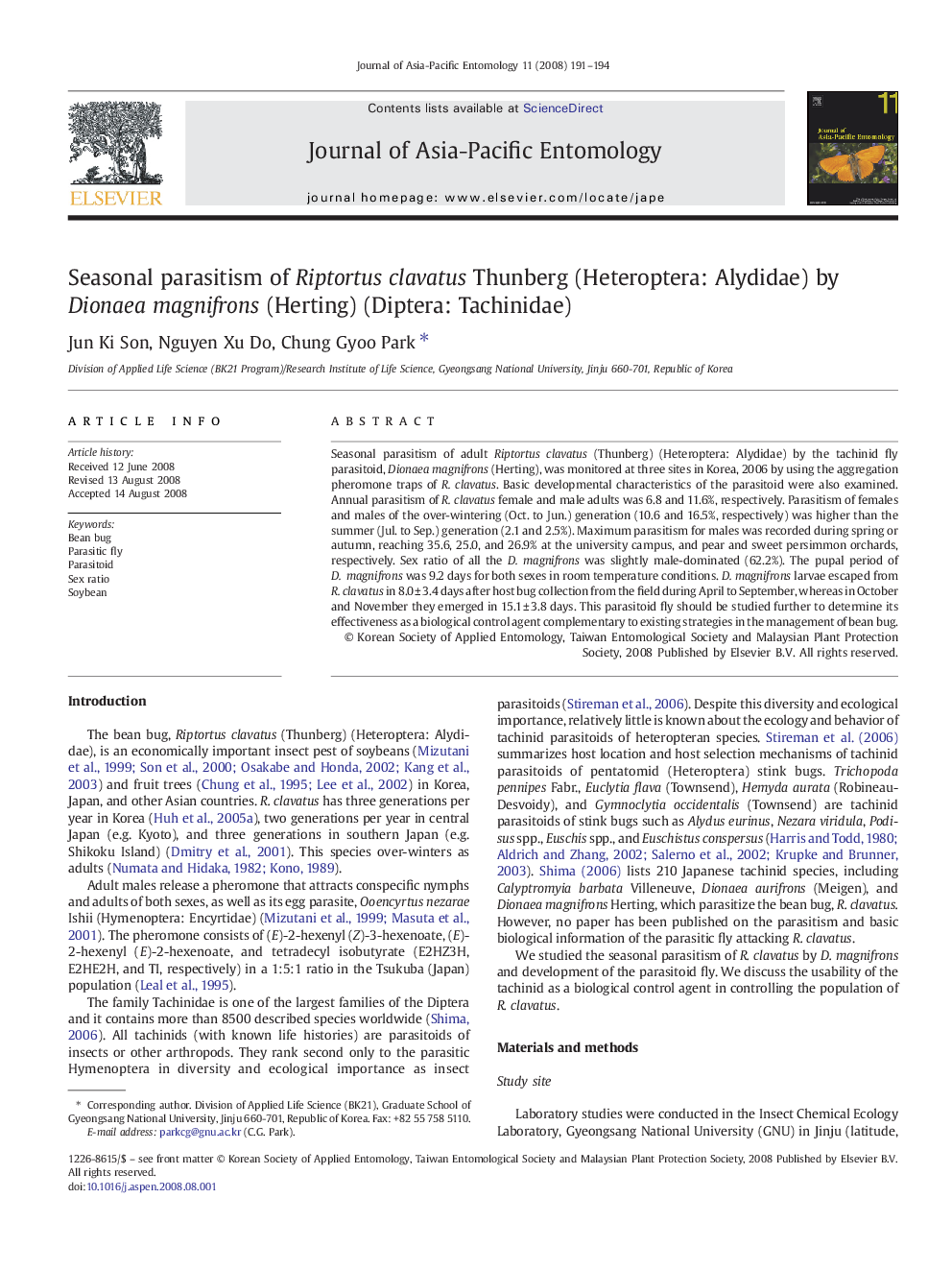| Article ID | Journal | Published Year | Pages | File Type |
|---|---|---|---|---|
| 4524877 | Journal of Asia-Pacific Entomology | 2008 | 4 Pages |
Seasonal parasitism of adult Riptortus clavatus (Thunberg) (Heteroptera: Alydidae) by the tachinid fly parasitoid, Dionaea magnifrons (Herting), was monitored at three sites in Korea, 2006 by using the aggregation pheromone traps of R. clavatus. Basic developmental characteristics of the parasitoid were also examined. Annual parasitism of R. clavatus female and male adults was 6.8 and 11.6%, respectively. Parasitism of females and males of the over-wintering (Oct. to Jun.) generation (10.6 and 16.5%, respectively) was higher than the summer (Jul. to Sep.) generation (2.1 and 2.5%). Maximum parasitism for males was recorded during spring or autumn, reaching 35.6, 25.0, and 26.9% at the university campus, and pear and sweet persimmon orchards, respectively. Sex ratio of all the D. magnifrons was slightly male-dominated (62.2%). The pupal period of D. magnifrons was 9.2 days for both sexes in room temperature conditions. D. magnifrons larvae escaped from R. clavatus in 8.0 ± 3.4 days after host bug collection from the field during April to September, whereas in October and November they emerged in 15.1 ± 3.8 days. This parasitoid fly should be studied further to determine its effectiveness as a biological control agent complementary to existing strategies in the management of bean bug.
